I’m back home from a full and inspiring few days at BC Campus’ Studio23 conference. The theme was “Reignite Your Teaching and Facilitation Practice”, and there was a lot of focus on bringing people together, creativity, and celebration. The conference took place in the beautiful SFU Harbour Centre in downtown Vancouver, so it was a real treat to be able to travel to the big city, be taken care of with wonderful food and drinks in a caring and comfortable conference environment, and to spend time with my family and friends in the evenings. I feel so grateful to have had this opportunity to participate.
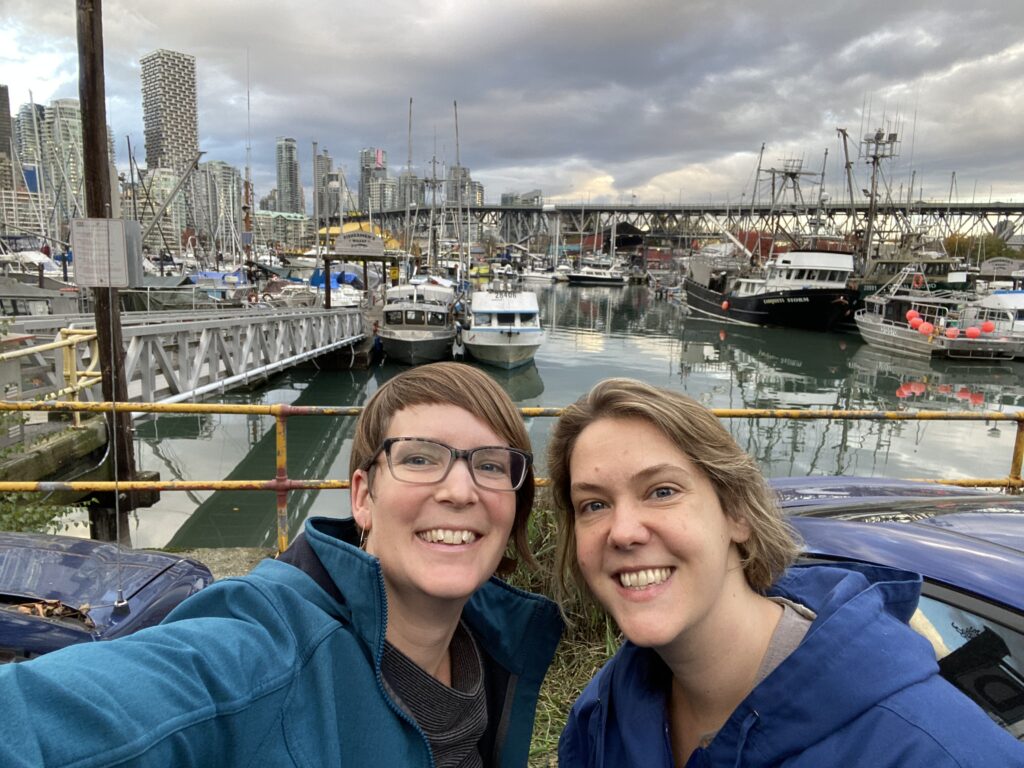
At the end of the conference Tracy Roberts from BC Campus quoted the book The Art of Gathering (Parker, 2018) saying “It’s not what we did here, its who we were.” So, who was I at Studio23? I feel I got to be an engaged, smart, creative and talented educator and educational developer. I was someone who was new on the scene and entering a new network of incredible people, so I built new relationships. Some of those will fade away after the end of the conference and I’m hopeful some will persist. I got to try on for size the feeling of belonging to this community and put on the hat of an Educational Developer, representing my institution to colleagues from around the province, and see how it fit.
I would like to reflect here on two experiences from the conference that stood out for me. The first was around ePortfolios and the concept of “Folio-thinking”. It involved meeting Dr. Melissa Shaquid Pirie from PebblePad and seeing her lightning presentation, and then learning more about ePortfolios and the idea of “Folio-thinking” at the break-out workshop presented by Dr. Leeann Waddington and the team from KPU. I also spoke briefly with Sarah Louise Turner from SFU about ePortfolios. The timing was good since I am in the midst of creating my own portfolio (this website), so I have been thinking about portfolios, their purpose and how to craft them, quite a lot. Sarah Louise Turner explained that to start with ePortfolios consist of two basic aspects: Artifacts and reflection. For my own Portfolio I am working towards gathering artifacts such as examples of my assignments, student examplars, and blog posts about my Teaching and Learning experiences, and reflections on them here.
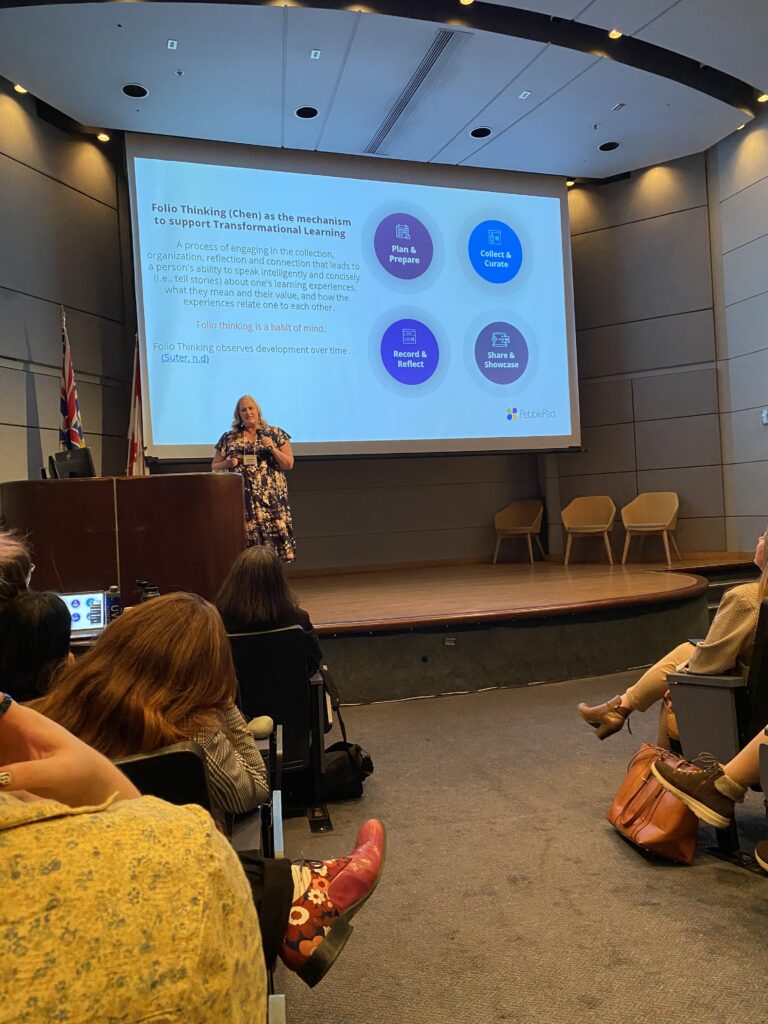
These presentations really had me thinking about the power of ePortfolios as learning tools that could follow learners through our entire Human Services program at NIC. We already have many individual assignments that include a reflection component. I think the learning impact for our students could come from being more intentional and clear about the reflection, and then locating the artifact and reflection in a curated collection so that their separate learning experiences are located alongside one another and begin to form a thread that is woven through the entire program. I believe this will help students build a story about their learning throughout the entire program, and this will also help them articulate their learning to potential employers when they leave. EPortfolios don’t have to be located in a powerful tool like PebblePad (although that sure would be nice to have!). We have access to OpenEd WordPress accounts and could set up a template with Pages pre-built so that its easier for students to add their learning to their WordPress site.
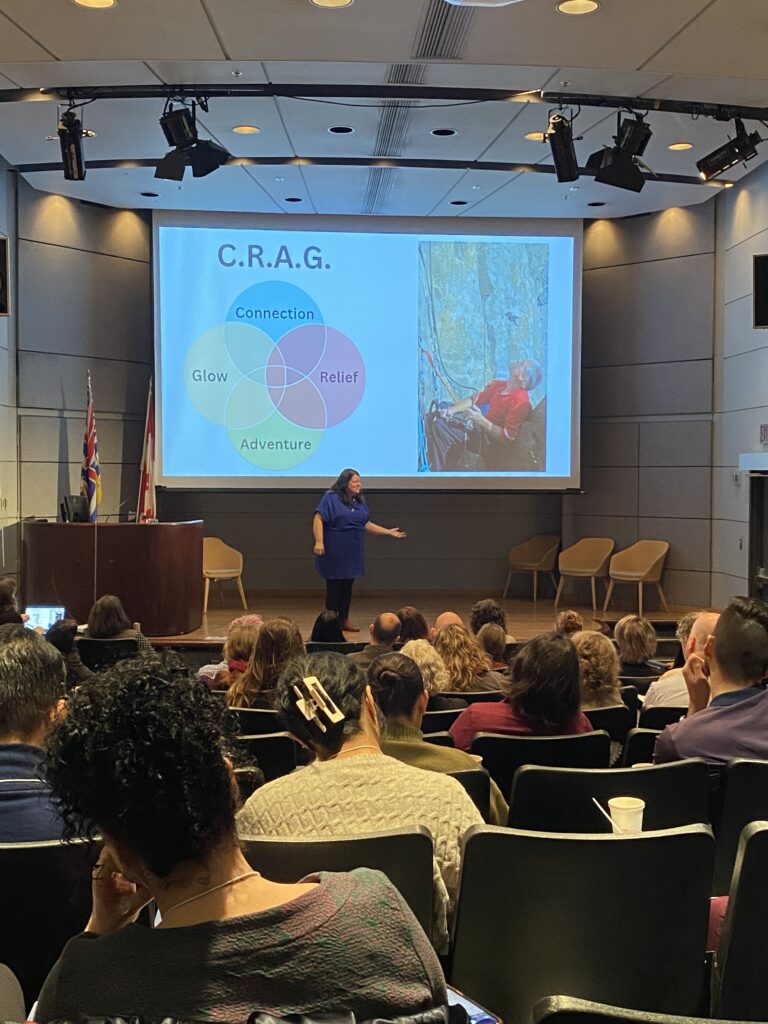
The second connection and presentation that had a big impact on me was meeting and learning from Dr. Carrie Nolan from the New Brunswick College of Craft and Design. Dr. Nolan’s keynote presentation on the second day of the conference focused on the acronym CRAG (Connection, Relief, Adventure, and Glow). It was highly engaging, and as an expert experiential educator she had us moving and out of our seats, doing activities that were fun and goofy and brand new to me, such as the Rock Paper Scissors World Championships (I can’t wait to do this with a big group!) and drawing contour lines right on our fist with a pen to create a surface that can quickly change between the real thing (fist) and a map (flat hand). Carrie’s talk inspired me to reconnect with loved ones and old hobbies (knitting! print-making!), be creative, express myself, dance, and find opportunities to GLOW! She described Glow as “doing what you’re made for” and “living your purpose.” For me Glow also involves “Finding my people” and being with them to dream and create change. Relief and Adventure were different but related. They involved seeking variety and varied experiences (Relief), and doing things that are new, novel, and outside your comfort zone (Adventure). On a personal level Dr. Nolan also inspired me as a paddler, outdoor adventurer, and someone who has gone on big expeditions, and these are all roles I relate to. She described paddling trips she leads in Baja called “Paddles and Pedagogy”, that had me dusting off a dream I had put on the shelf to go and pursue getting my Assistant Overnight Guide certification and working kayaking into my own career path.
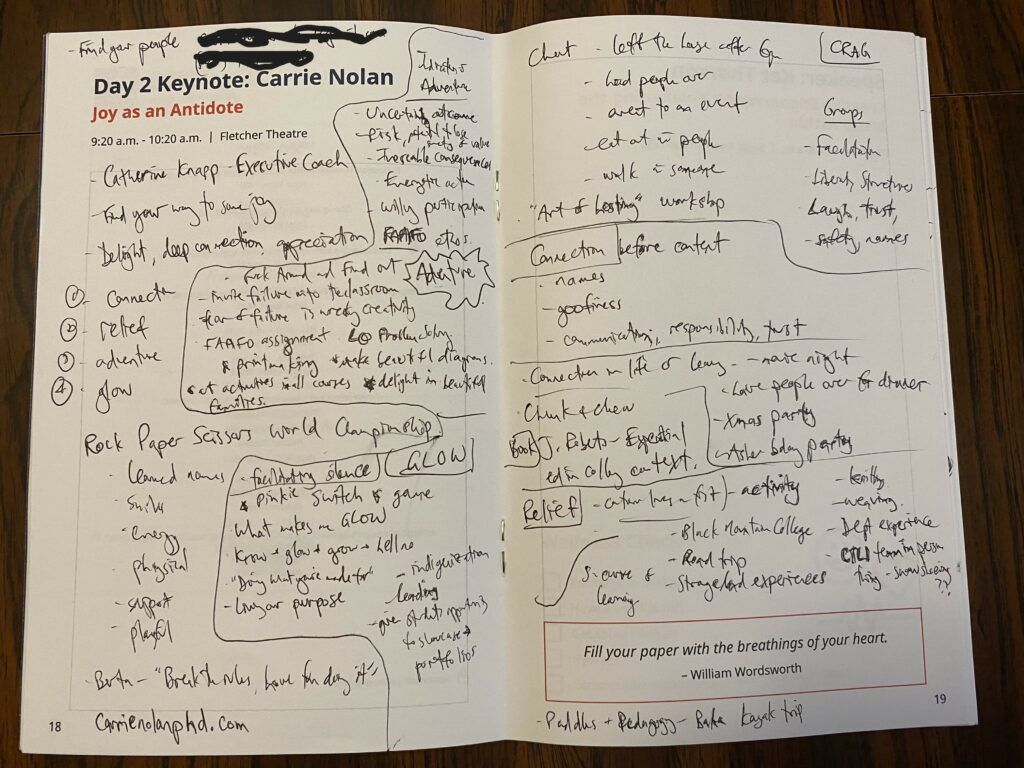
So what are my take-aways when it comes to CRAG and Carrie Nolan’s talk? Dr. Nolan said “Connection before content!” and I feel this is something that’s important in my classrooms, but even more so on my current work teams. In order to build cohesive, unified departments that move forward together in relationship we need to have time and space to spend together, be messy, tell jokes, and go on shared adventures. Just as our students build the stories of their learning through ePortfolios we need to build a story of our teams too.
When I started on my journey as an Educational Developer I really thought I would be putting my one-to-one counselling skills to use in terms of working with individual instructors and building on their strengths to make changes to their teaching that better align with their values and hopes for their students. What I’m discovering is that the Educational Development work I’m involved in is much more about supporting teams and building group cohesion to facilitate information sharing and collaboration to enhance quality student learning. So I feel that I can take Dr. Nolan’s CRAG and put it into action by using my prior knowledge and experience in leadership, team-building and experiential education to deepen relationships on our teams at NIC.
I came away from Studio23 with a journal full of notes and doodles, new relationships and connections, inspiration, learning, a pretty good drawing of an owl, a handful of books to add to my reading list, and a better understanding of the varied and exciting work of Educational Developers at post-secondary institutions in BC. I look forward to the next conference!
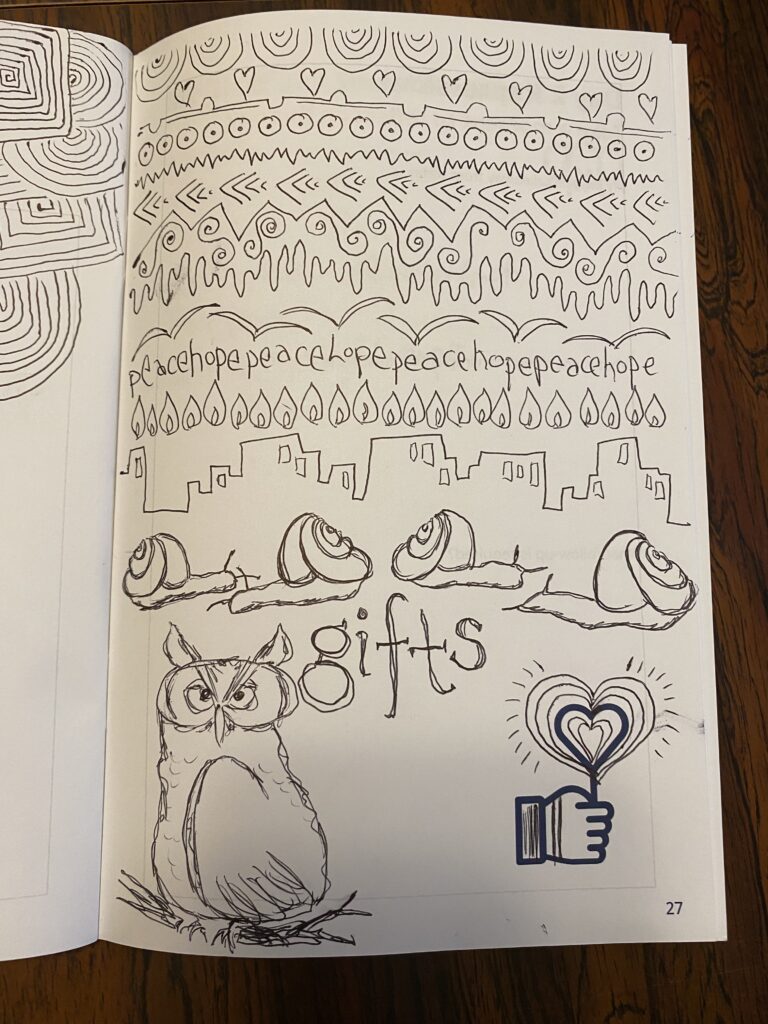
References
Parker, P. (2018). The art of gathering: how we meet and why it matters. New York, Riverhead Books.
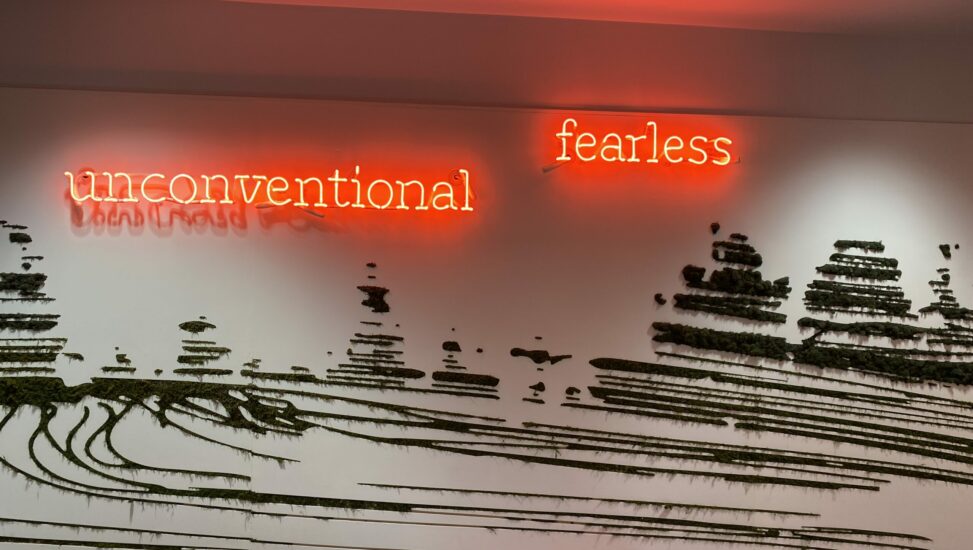
Leave a Reply
You must be logged in to post a comment.